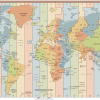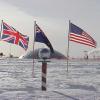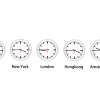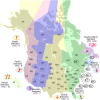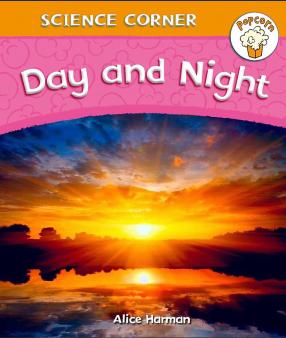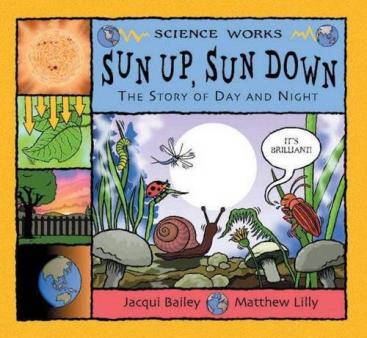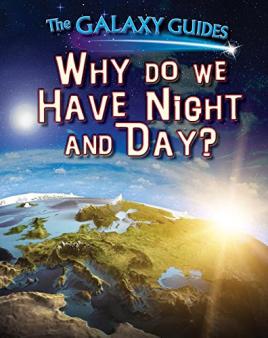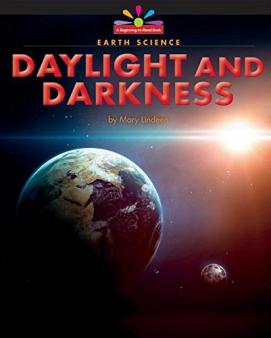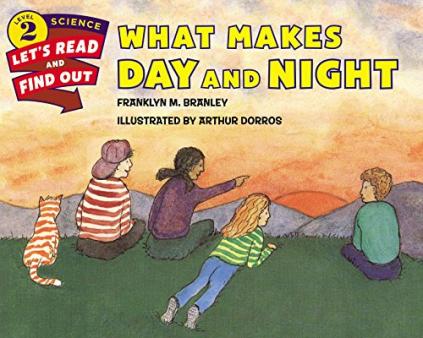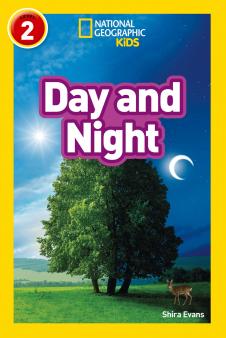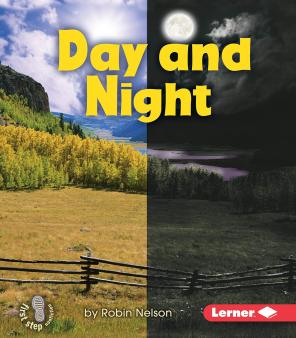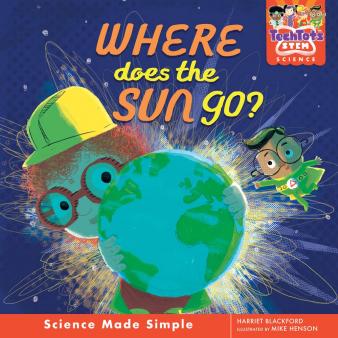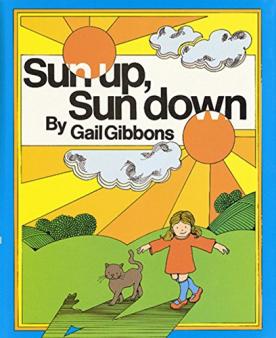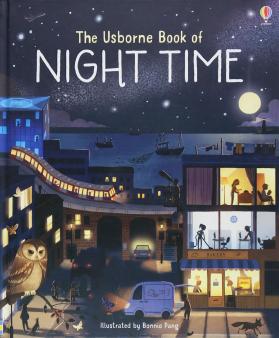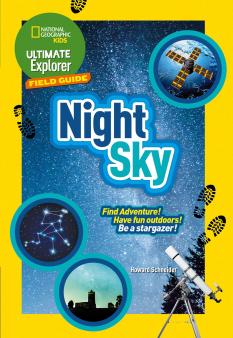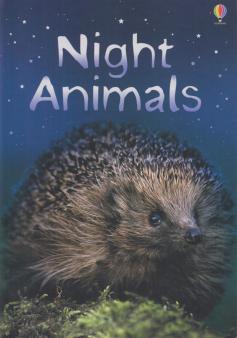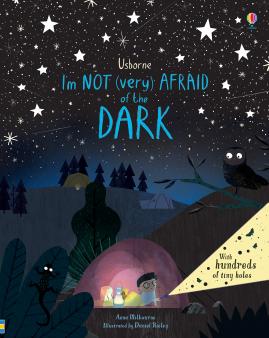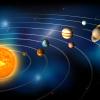Day and night
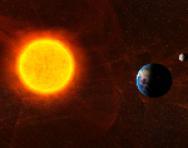
Contents
Top facts about day and night
Did you know
Day and night gallery
About day and night
Words to know for day and night
Just for fun
Books about day and night
Find out more about day and night
See for yourself
Quick quiz about day and night
What are day and night?
Daytime is when you can see the sun from where you are, and its light and heat can reach you. Nighttime is when the sun is on the other side of the Earth from you, and its light and heat don’t get to you.
We get day and night because the Earth spins (or rotates) on an imaginary line called its axis and different parts of the planet are facing towards the Sun or away from it.
It takes 24 hours for the world to turn all the way around, and we call this a day. Over a year, the length of the daytime in the part of the Earth where you live changes. Days are longer in the summer and shorter in the winter.
Top 10 facts
- It takes 24 hours for the Earth to turn all the way around (rotation). That makes one day and one night.
- At any moment, half of the world is in daytime and half is in nighttime.
- The world is like a ball. We call the top half the Northern hemisphere and the bottom half the Southern hemisphere. The (imaginary) line between them is called the equator.
- In the Northern hemisphere, we have summer in June, July and August and winter is in December, January and February.
- In summer the days are longer than they are in winter. In London, the longest day is about 16 hours and 39 minutes and the shortest is 7 hours and 45 minutes.
- In the Southern hemisphere the seasons are the other way around. When it is summer in Europe, it is winter in Australia. Imagine celebrating Christmas on a long, hot summer day!
- To help us understand where we are in the world, we also split the world into right and left halves called the Eastern hemisphere and the Western hemisphere.
- The (imaginary) line between the Eastern and Western hemispheres is called the ‘Prime Meridian’ and it goes through Greenwich Royal Observatory in London.
- The world is split into time zones. Continental Europe is in the time zone to the east of Britain, so time is one hour ahead there; when it is 1pm in Britain it is 2pm in France.
- On the opposite side of the world from London is the International Date Line. On one side of the line time is 12 hours behind Britain, and on the other side time is 12 hours ahead of Britain. That means that it is a different day on each side of the line.

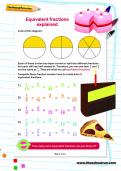
Boost Your Child's Learning!
- Get a tailored learning plan for your child
- English & maths resources delivered each week
- Interactive & printable activities
Did you know?
- The Earth is always spinning around – sometimes from where you stand on the Earth you can see the Sun (this is the daytime) and sometimes the part of the Earth where you are is facing away from the Sun so it is dark (this is the nighttime). It takes 24 hours for the Earth to spin all the way around, and we call this a day. Find out more about the sun and the Earth.
- The sun rises from behind the Earth in the East and sinks below the Earth in the West. The time when it appears is called sunrise, and the time when it disappears is called sunset. The length of time between sunrise and sunset is called daytime.
- The Earth spins around an imaginary line that runs between the South Pole and the North Pole. This line isn’t completely straight – so, sometimes the North Pole is pointing away from the sun for long periods of time and it is always dark there, and sometimes the North Pole points towards the sun for long periods of time and it is always light there.
- The Earth is also split into Northern and Southern hemispheres, which are divided by an imaginary line called the equator. The North and South poles are as far from the equator as you can get. Britain is in the Northern hemisphere and is slightly closer to the North Pole than it is to the equator.
- In Britain we don’t have any days when it is always light or always dark, but the days are longer during the times of the year when the North Pole is pointing towards the sun and shorter when it is pointing away from the sun.
- When the days are shorter, there is less time for us to get heat from the sun, so the weather is colder. This is why we get winter. When the days are long, there is more time for us to get heat from the sun so we get hot summer days.
- Because the equator is halfway between the North and South poles, the days there are always 12 hours of daytime and 12 hours of nighttime. There is very little difference between the seasons.
- In the Southern hemisphere the seasons are at opposite times to the Northern hemisphere. When it is summer here it is winter there, and when it is winter here it is summer there.
- The shortest day of the year is called the winter solstice and the longest day of the year is called the summer solstice.
- There are two days each year where every place on Earth has 12 hours of daytime and 12 hours of nighttime. These are called the spring and autumn equinoxes.
Day and night gallery:
- Day and night shown on a globe
- Different time zones
- A map showing all of the time zones in the world
- The South Pole
- Businesses need to be aware what the time is in different offices around the world!
- There are seven time zones in North America
Gallery
About
As the Earth moves around the Sun it rotates on its axis, so we have day and night. The side of the Earth facing the Sun is bathed in light and heat (daytime). The side of the Earth facing away from the Sun, out towards space, is darker and colder (nighttime).
It takes just over 365 days for the Earth to travel all the way around the Sun. We call the length of time the Earth's revolution around the Sun takes a year, but to make life easier, most years have 365 days and every fourth year has 366 days. We call a year with 366 days a leap year. The extra day is February 29th. The years 2012 and 2016 were leap years; 2020 and 2024 will also be leap years.
The further you are from the equator, the longer a day will be in summer and the shorter it will be in winter. On the longest day of the year in London there are about 16 hours and 39 minutes of daylight, but in Edinburgh, 400 miles north of London, there are 17 hours and 36 minutes of daylight. This is because Edinburgh is further away from the equator than London is.
To help us know where we are in the world, we also divide the world into Eastern and Western hemispheres. The line between them is called the Prime Meridian and it runs through the Greenwich Royal Observatory in London. All measurements of how far East and West places are are taken from this line. We call these measurements longitude.
Midday is the time in the Earth’s rotation when the position of the sun is at the same longitude. The sun has travelled half way across the sky and still has half way to travel.
For people living on the far side of the world, when it is midday in London, it will be the middle of the night for them. It is more useful for them to set their clocks by when the sun will be visible where they live than when it will be visible in London.
For this reason we divide the world into ‘time zones’ so that the time on the clock matches the position of the sun in the sky. Most time zones are set as an exact number of hours ahead of or behind the time in London. The time in France is one hour ahead of London and the time in New York in the USA is 5 hours behind London.
Most countries prefer to be in only one time zone. That way all the schools and offices open and close at the same time and nobody gets confused. This means that the boundaries between time zones aren’t always straight so that all of the country is in one time zone, even though part of the country should be in another one. The USA is so big that it is in several time zones.
On the far side of the world from Greenwich is the International Date Line. On the western side of the line the time is 12 hours ahead of London and on the eastern side of the line the time is 12 hours behind London. This means that on the western side of the line it is one day later than on the eastern side of the line.
Sometimes we change the time of the clocks so that we can make more use of the hours of daylight. If we used the same time all year around in Britain then, in the summer, the sun would rise at 3:30am and set at 8:30pm. Not many people are awake at 3:30am, but lots of people are awake after 8:30pm. We set our clocks forward one hour in the spring so that the sun rises at 4:30am and sets at 9:30pm and we set them back one hour in the winter. This is called summer time.
Words to know for day and night:
- Day – This is the length of time it takes the Earth to spin all the way around so that you get a night and a day: 24 hours.
- Daytime – the time when the sun is visible from a place on Earth
- Equator – the line that divides the Northern and Southern hemisphere
- Equinox – days when there are 12 hours of light and 12 hours of darkness everywhere on Earth. There are two each year – one in late March and one in late September.
- International Date Line – The line on the far side of the world from the Prime Meridian where the east and west sides of the line are in different days.
- Latitude – This is a number between 0 and 90 that tells you how far from the equator you are. The latitude of the equator is 0°, and the latitude of the North Pole is 90°.
- Longitude – This is a number between 0 and 180 that tells you how far from the Prime Meridian you are. The longitude of the Prime Meridian is 0°, and the longitude of the International Date Line is 180°.
- Nighttime – the time when a place on Earth is facing away from the Sun's warmth and heat
- North Pole – the northernmost place on Earth
- Prime Meridian – the line dividing the Eastern and Western hemisphere, running through Greenwich Royal Observatory in London
- Revolution – the movement of the Earth around the Sun.
- Rotation – the movement of the Earth turning on its axis. A complete rotation takes 24 hours.
- Seasons – There are four seasons: spring, summer, autumn and winter.
- Solstice – The longest and shortest days of the year are the Summer Solstice and Winter Solstice.
- South Pole – the southernmost place on Earth
- Time zone – The Earth is divided into time zones. The time in most time zones is one hour earlier than the time in the zone to the East, and one hour later than the time in the zone to the West.
- Year – the length of time it takes the Earth to travel around the Sun, approximately 365 days.
Related Videos
Just for fun...
- Find out where it is daytime and where it is nighttime right now
- See what the time is all over the world
- Colour in some pictures of nocturnal animals
- Find out the latitude and longitude of your home town
- Try lots of different seasons games
- Take a day and night quiz
- Spot animals in the dark in Night Light, an interactive game
- Make your own paper sundial
Best kids' books about day and night
Find out more about day and night
- Understand how the movement of the Earth causes day and night in a BBC Bitesize video
- Read about time and time zones
- Where does the Sun go at night?
- Watch a video about weather and seasons
- Life in the dark: the creatures who come out at night
- A night and day explanation for kids from DKfindout!
- Listen to night-time noises and learn about what you heard
- An animation which explains why we have seasons
- See a cartoon of night-time shift workers
- NASA's views of the earth at night
- Whole sky movies from the National Schools Observatory to help you see how the movement of objects in the sky depends on where you are in the world, and on what time of year it is
- Experience a summer's night in videos of fireflies (lightning bugs)
See for yourself
Visit the home of the Prime Meridian at Greenwich Royal Observatory in London
Try some shadow experiments
Quick quiz about day and night!
Q: What is day time?
Q: What is night time?
Q: How many days does it take for the earth to travel around the sun?
Q: What hemispheres do we divide the earth into?
Q: What is the equator?
Q: Why do we sometimes change the clocks?
Q: True or false: The world has one time zone.
Answers can be found within this page!
Also see

Give your child a headstart
- FREE articles & expert information
- FREE resources & activities
- FREE homework help


